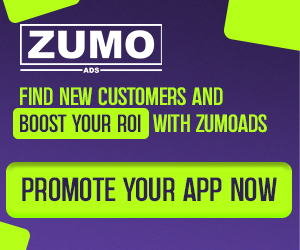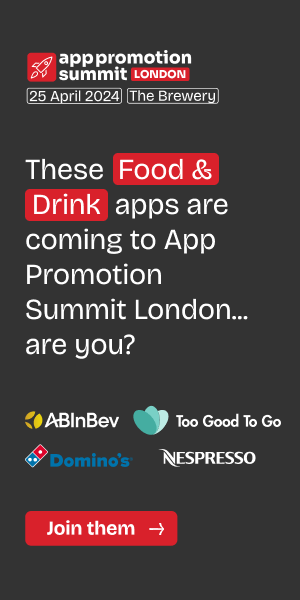Here’s the situation. You open up a business, say a coffee shop, and spend a ton of time and money getting new customers into the door. Then you open up a bakery, which fits pretty well with your existing customer base. The natural step would be to advertise your bakery to your warm client base, right? Well, it’s not so straightforward. The financially logical step would be to analyze how much you should spend advertising to your existing clients, so that you’re not overpaying. And from the perspective of your coffee shop, you would need to understand if advertising your bakery to them is more beneficial than upselling them some of the baked goods from your coffee shop that you buy in from a different bakery.
In effect, that’s cross promotion advertising inside of an app, which is especially important in gaming, where publishers typically have a portfolio of games in their arsenal. The big question lies: how you can ensure that your monetization is optimized between showing ads from your own games versus other games and, what is the ideal UA cost of acquiring these users through your own apps? Ideally, you want to be able to scale quickly without spending too much money, and benefit from acquiring users who are more likely to have a higher retention level. Yet you also want to make sure that placing your ads in your existing game isn’t damaging to that game’s revenue.
Currently, in the in-app space, there are three main solutions that app developers are implementing to run cross promotional campaigns. Let’s take a look at the options, and consider their pros and cons.
Building a native placement
Many developers will create a dedicated ad placement for cross promotion ads which is unique to their app, and sits outside of the ad networks they work with. On the plus side, this option is theoretically free, and you can get more ad value from each of your users. The placements can also be controlled and adapted more easily, giving you more creative freedom.
On the negative side, there are several main issues. Firstly, these ads tend to blend into the background of games resulting in a low engagement rate, so scaling from utilizing this ad unit is very difficult. Secondly, since the ad sits outside of the ad network, its placement, creation and tracking must all be managed internally, causing many blind spots and making campaign optimization and attribution very challenging. There may easily be a situation where a placement isn’t being tracked through an attribution partner, so an ad network takes credit for an install that a cross promotion ad drove through a native ad placement. Finally, the ad unit cannot be monetized with outside demand resulting in a potential loss in revenue.
Creating a dedicated instance in the waterfall
In this option, you can place a cross promotion campaign in your waterfall as a line item. The benefit is that it’s easy to attribute a user to cross promotion through each individual instance, so the richer reporting insights can help with optimization.
However, this method utilizes a flat, arbitrary CPM bid which is not the usual performance-driven CPI bid, and is therefore a very risky method of acquiring users since it makes optimization for quality and cost very hard. Additionally, the performance of the campaign cannot be optimized by machine learning and delivery logic, since it’s not able to leverage any of the capabilities of an ad network. So potentially, you’re undervaluing your placement and not achieving the scale you could achieve, or you’re overvaluing your placement and ‘stealing’ revenue from another network which could be monetizing better for you. Using this method gives you more transparency than the previous method but it’s far from a perfect solution.
Utilizing an ad network
When it comes to adding a cross promotion ad through an ad network, the pros are pretty strong. The bids are CPI-based rather than CPM-based, using the machine learning of the ad network to deliver the campaign intelligently and estimate the likelihood of an install occuring. This ultimately results in a higher quality of user and more efficient spend. You also get access to a network’s delivery engine, allowing for more optimized campaigns.
However, one of the biggest downsides is that the cross promotion activity is blended with other ads. This has two main repercussions. Since all of the instances – both cross promotion and others – are blended, the commission you’re paying to the network for the cross promotion ads isn’t transparent. Secondly, because there is no way to isolate the cross promotion demand in your monetization reports, you have no insights into the value that your cross promotion campaigns are bringing to you. Your performance transparency is a black box of blended information.
Finally, and critically, due to the lack of supply-side control and transparency, if you’re running the same ad in different networks, you may end up competing with yourself over the same instance, and pushing the price higher than the optimal price.
Master Global User Growth: Insights from SocialPeta's Trends White Paper
SocialPeta released the 2023 Global Mobile Games Marketing Trends White Paper, packed with the latest data and forward-looking industry insights, to empower gaming professionals to excel in the global market.
Get the ReportWhere do you go from here?
Cross promotion campaigns are also more complex because there are two teams involved – monetization and user acquisition – often working in silos, each with different metrics, visibility and team-level goals. For an ideal cross promotion solution, as a UA manager, you would have the data insights and technical capabilities that would enable you to run efficient campaigns just like you would in any other situation, yet without paying unnecessarily high margins for your “own” users. Dynamic suppression would be available, CPI bidding would be used, data science would be enabled, reporting would be transparent, and all of the ad network’s other strong capabilities would be available.
As a monetization manager, you would be able to optimize the waterfall effectively, view full monetization reports, access transparent eCPM performance data, and drive the maximum amount of revenue from your app, whether that comes from ads from your own games or ads from other games.
In June 2019, ironSource launched a solution that tackles these issues. Our solution enables you to correctly and cleverly connect the monetization and UA sides of a business to ensure that you can extract the full value of your existing users, in a smart, data-driven and cost-effective way.













